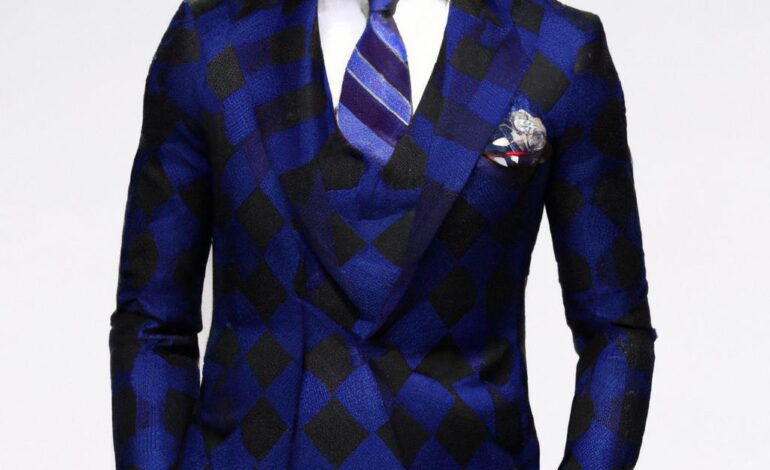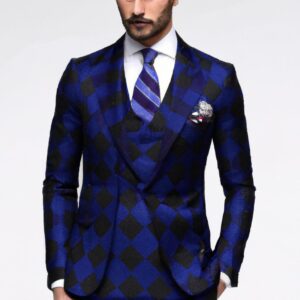
Introduction: The Importance of Keeping Up with Emerging Trends in Menswear Design
Menswear fashion has always been an important aspect of the fashion industry, and its influence continues to grow each year. With a significant increase in male fashion bloggers and influencers, it is clear that men are becoming more interested and invested in their personal style. This makes staying updated with emerging trends in menswear design more crucial than ever before.
Not only does following these trends allow you to stay on top of your fashion game, but it also shows that you are knowledgeable and in tune with the current state of the industry. Whether you are a fashion enthusiast, a designer, or simply someone who wants to look stylish, understanding the evolving world of menswear design is key.
History of Menswear Fashion
The history of menswear fashion dates back to ancient times, where men’s clothing was primarily functional and simple. In ancient civilizations, men wore tunics and togas, often made of simple fabrics like linen or wool. As societies progressed, men’s clothing became more elaborate and differentiated based on social class and profession.
During the middle ages, men’s fashion was heavily influenced by the church, with styles like the tunic and robe remaining popular. It wasn’t until the Renaissance period that men’s fashion began to evolve and become more decorative and detailed.
In the 19th century, menswear took a significant turn with the Industrial Revolution, leading to the mass production of clothing and the development of tailored suits and trousers. This era also saw the emergence of formal wear for events such as weddings and balls.
The 20th century saw significant changes in menswear fashion, from the introduction of casual wear like the polo shirt and jeans in the 1920s to the rise of rebellion and counterculture in the 1950s and 1960s, influencing trends such as leather jackets and denim. The 1970s and 1980s brought about bold and flamboyant fashion statements, with bright colors and exaggerated silhouettes becoming popular.
In the late 20th and early 21st centuries, menswear became more diverse, with streetwear and hip-hop culture influencing styles. Men’s fashion also embraced elements from other cultures, such as Japanese street fashion and traditional Indian clothing.
Today, menswear fashion continues to evolve and adapt, with influences from various subcultures and movements. It is no longer limited to traditional gender norms, with the rise of genderless and unisex fashion. Designers are also placing a greater emphasis on sustainability and ethical practices, as consumers become more conscious of the environmental impact of fast fashion.
As we look towards the future, it’s clear that menswear fashion will continue to develop and push boundaries, reflecting the ever-changing society we live in.
Current Market Trends
The world of menswear fashion is constantly evolving, influenced by various factors such as cultural movements, technological advancements, and societal shifts. In recent years, there has been a surge in the popularity of streetwear, vintage fashion, and luxury brands, all of which are making their mark on current menswear trends.
Streetwear: The rise of streetwear has had a significant impact on the current menswear market. This style, which originated from skate culture and hip-hop music, is defined by its casual and comfortable aesthetic, often incorporating elements such as oversized silhouettes, graphic t-shirts, and statement sneakers. Streetwear has become mainstream, with big names like Supreme, Off-White, and Yeezy leading the way.
Vintage Fashion: Another trend that has been on the rise is vintage fashion. Inspired by past eras, this style incorporates elements of nostalgia and individuality. From retro prints to classic silhouettes, vintage fashion has become popular among men who want to stand out from the crowd and add a unique touch to their wardrobe.
Luxury Brands: Luxury brands have always been influential in menswear fashion, and they continue to dominate the market. With high-end designers constantly pushing the boundaries and creating unique and luxurious pieces, men’s fashion has become more sophisticated and refined. The influence of luxury brands can be seen in everything from formal wear to casual streetwear.
All of these current market trends highlight the diverse and ever-changing nature of menswear fashion. By incorporating elements from streetwear, vintage fashion, and luxury brands, men have a wide range of options to express their personal style and stay on-trend.
Emerging Trends: Sustainability, Genderless Fashion, and Bold Colors
The world of menswear fashion is constantly evolving, with new trends emerging every season. In recent years, there has been a growing focus on sustainability in the industry, as well as a blurring of traditional gender lines. Additionally, bold colors and patterns have become increasingly popular in menswear design, adding a playful and creative element to men’s fashion.
- Sustainability: As consumers become more conscious of their environmental impact, the fashion industry has begun to shift towards more sustainable practices. This includes using eco-friendly materials, recycling and upcycling garments, and adopting ethical production processes. In menswear design, sustainability is evident in the use of organic cotton, hemp, and recycled fabrics, as well as the rise of brands that prioritize fair labor practices and reduce waste in their supply chain.
- Genderless Fashion: The traditional idea of men’s and women’s clothing is being challenged, with more and more brands embracing gender-neutral designs. This allows individuals to express their personal style without conforming to societal expectations based on their gender. In menswear, this trend can be seen in the use of looser and more fluid silhouettes, as well as the incorporation of traditionally “feminine” elements, such as ruffles and florals, into men’s clothing.
- Bold Colors and Patterns: While menswear has often been associated with neutral colors and classic patterns, there has been a recent surge in vibrant hues and bold prints. From bright neon colors to whimsical animal prints, men are no longer afraid to make a statement with their wardrobe. This trend can be seen in streetwear-inspired fashion, as well as in luxury brands like Gucci and Versace, who have embraced bold and playful designs in their menswear collections.
Overall, these emerging trends in menswear design reflect a shift towards more inclusive and expressive fashion, where sustainability and creativity are prioritized. As the industry continues to evolve, it’s important to stay informed and open-minded about these new directions in menswear fashion. Who knows what other exciting trends will emerge in the seasons to come!
Future Predictions
Menswear fashion is constantly evolving and changing, and it’s important for designers and fashion enthusiasts to stay up-to-date with the latest trends in this industry. To give a glimpse of what the future may hold for menswear design, we have gathered insights and predictions from industry experts.
- Sustainability: With an increasing focus on environmentally-friendly practices, we can expect to see more sustainable materials and production methods being incorporated into menswear design. This includes the use of organic fabrics, recycled materials, and reducing waste in the manufacturing process.
- Genderless Fashion: The concept of gender fluidity has been gaining momentum in recent years, and this is reflected in the fashion industry as well. It is predicted that menswear design will continue to blur traditional gender roles and offer more options for individuals to express themselves through fashion regardless of their gender identity.
- Vibrant Colors and Patterns: Menswear fashion has traditionally been associated with neutral and muted colors, but there has been a shift towards bolder and brighter colors and patterns. This trend is expected to continue, with designers incorporating more vibrant hues and playful prints into their collections.
- Inclusivity: With the rise of movements focused on diversity and inclusivity, menswear fashion is also becoming more inclusive and representative of all body types, ages, and ethnicities. This means we can expect to see a wider range of sizes, ages, and diverse models being featured in menswear campaigns and shows.
Overall, the future of menswear design looks exciting and diverse, with a focus on sustainability, inclusivity, and bold self-expression. By staying informed and open to new ideas, we can all be a part of shaping the future of menswear fashion.
Conclusion:
In today’s fast-paced fashion industry, it is crucial to stay ahead of the game and keep up with emerging trends in menswear design. As we have discussed in this guide, menswear fashion has a rich history and is constantly evolving. From streetwear influences to sustainability and genderless fashion, new trends are emerging every day.
By staying updated with these emerging trends, not only can you elevate your personal style, but you can also stay relevant in the competitive fashion market. As the industry continues to evolve, keeping up with emerging trends can give you an edge and help you stand out from the crowd.
Through this guide, we hope you have gained a better understanding of the current and emerging trends in menswear design. We encourage you to experiment with different styles and stay open to new ideas. The future of menswear fashion is exciting, and we can’t wait to see how it will continue to evolve in the coming years.
comments: 0
